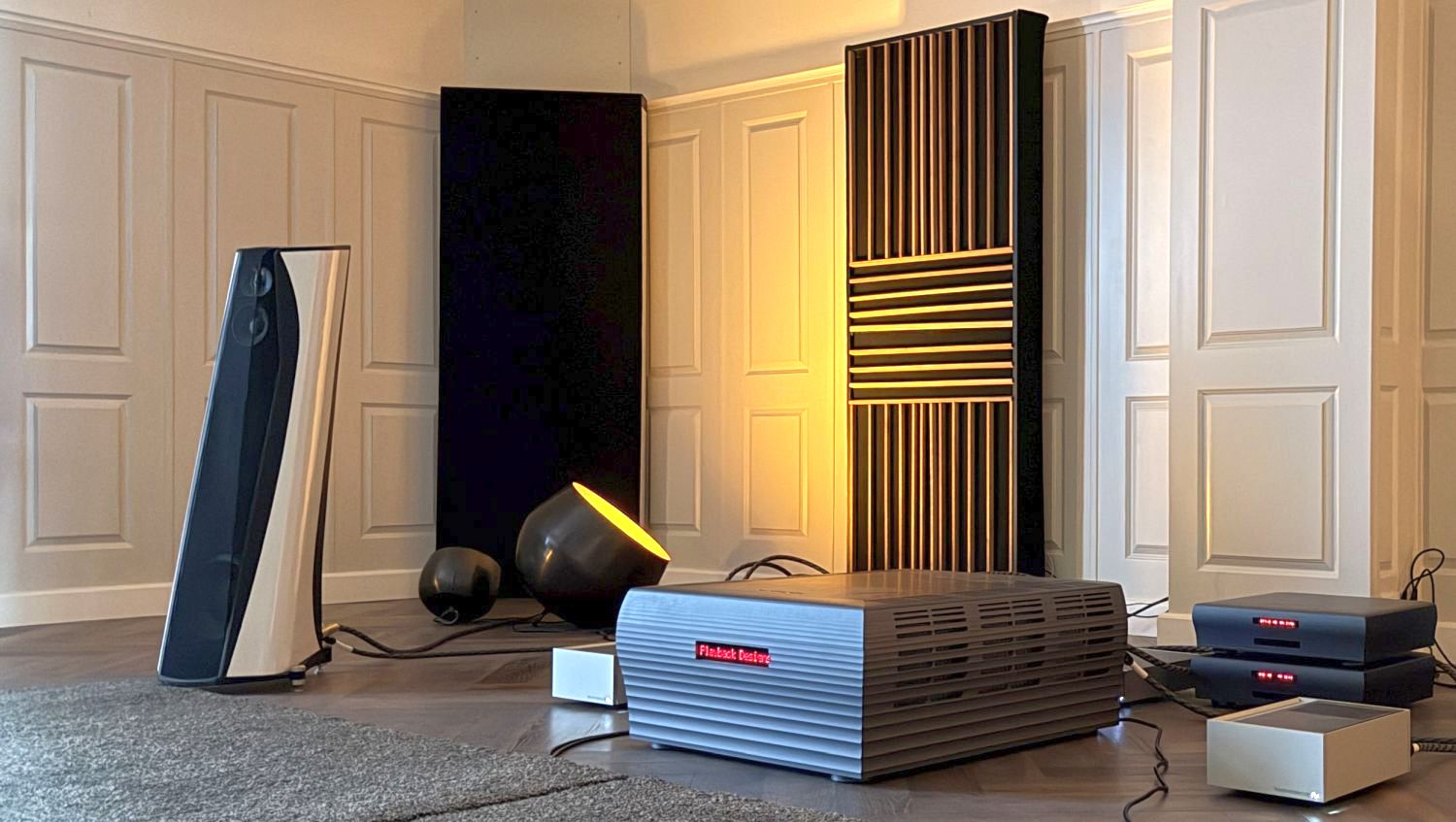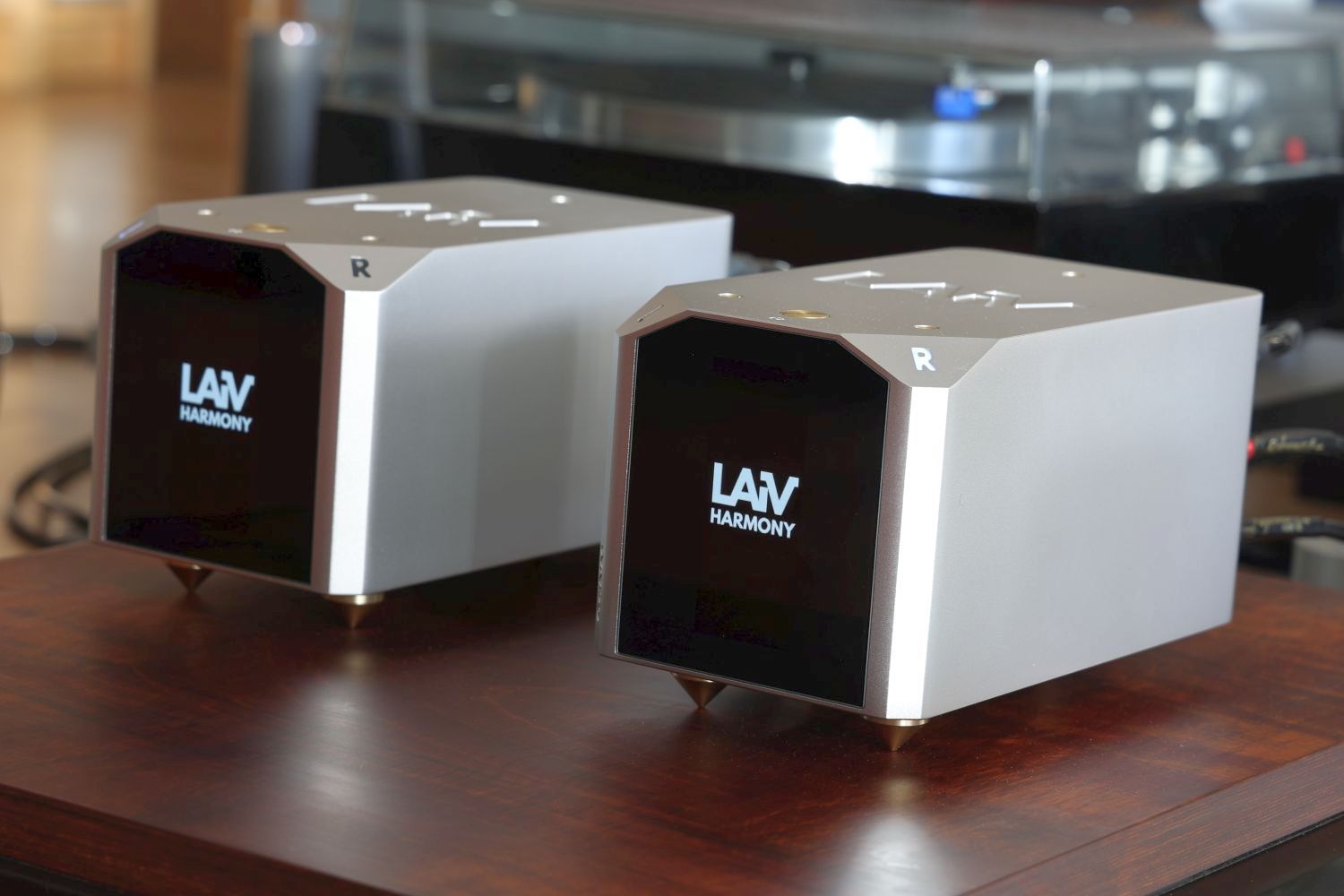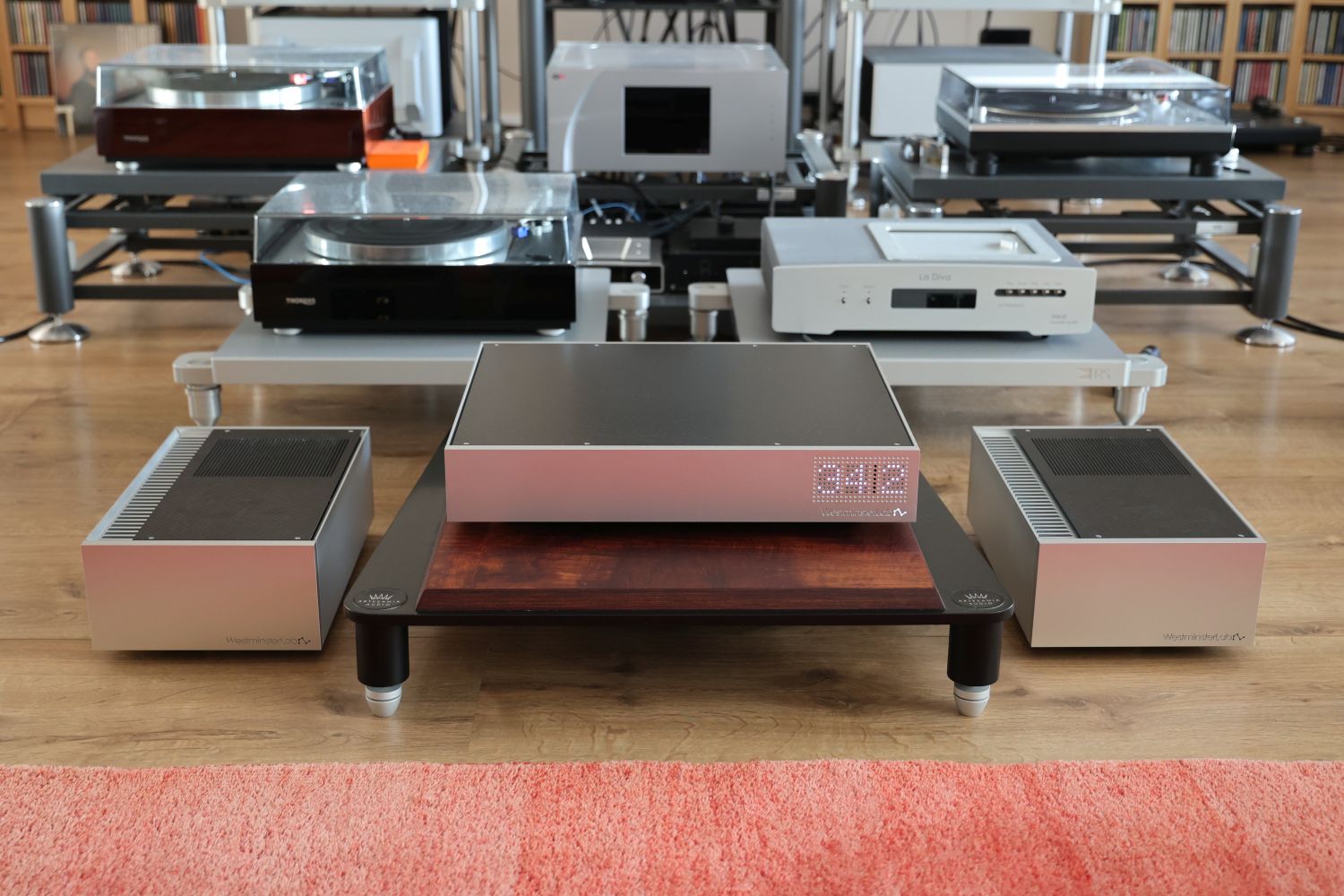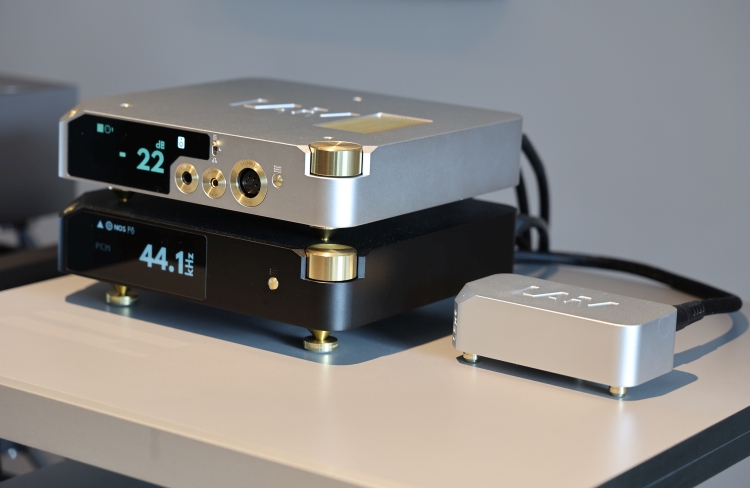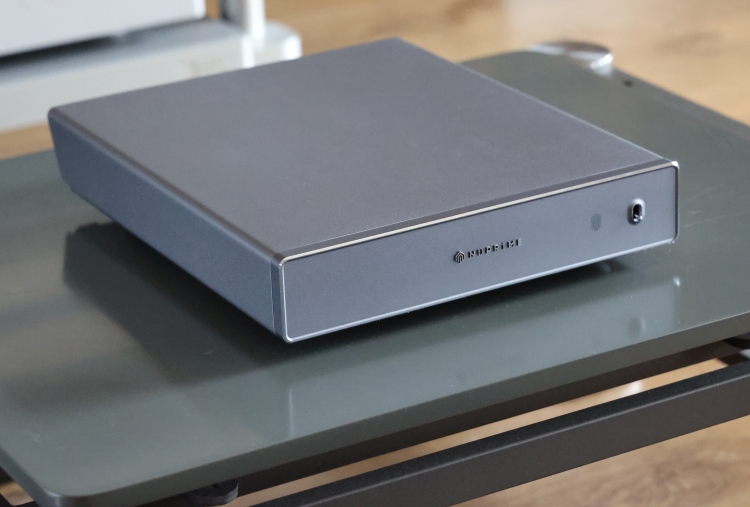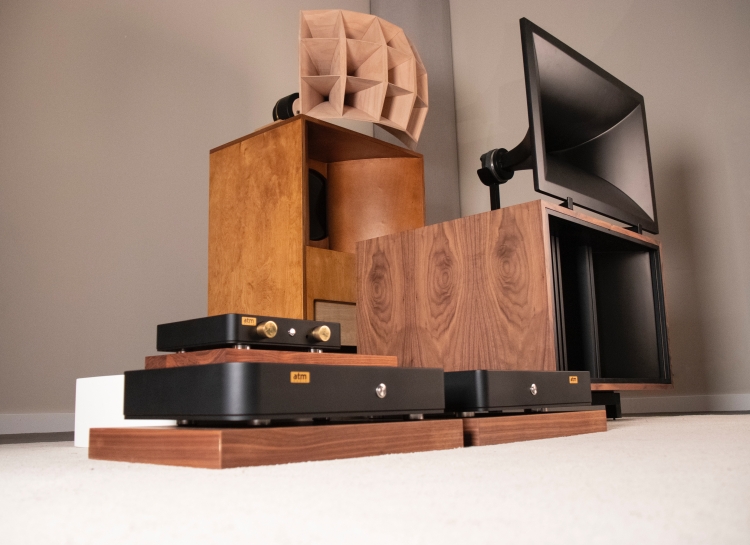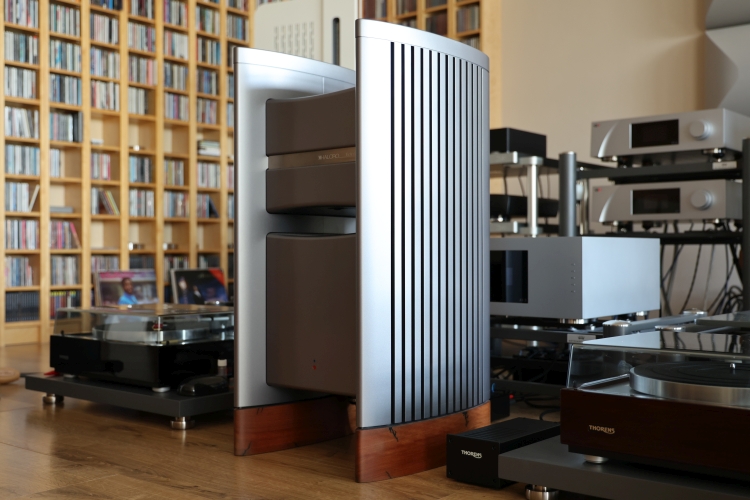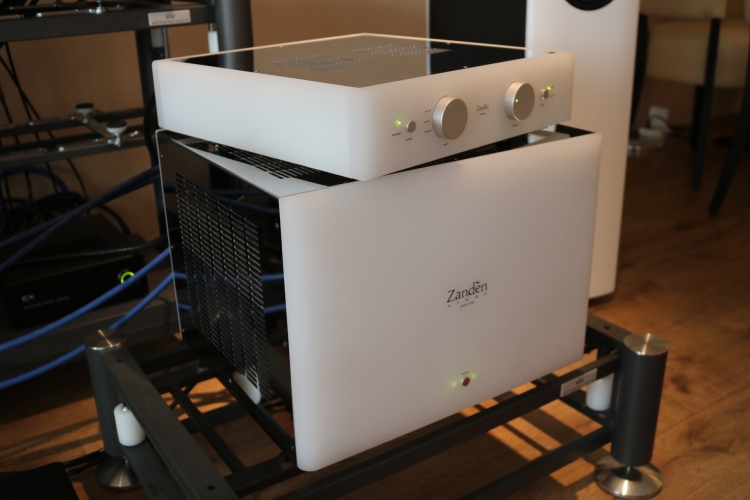
Review samples supplied by Chattelin Audio Systems
Retail prices in the Netherlands:
3100 preamp – 12.490 euro
8120 power amp – 21.490 euro
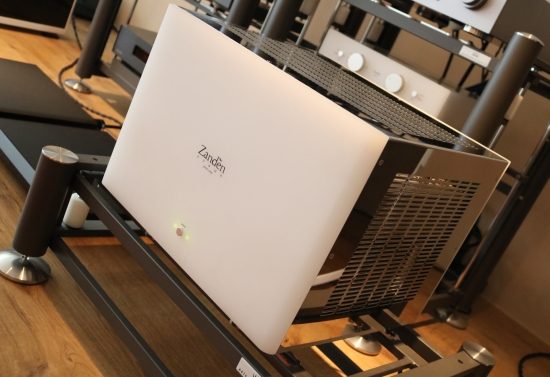
Zanden 8120 description
The Zanden 8120 is a class A/B 90-watt fully balanced Push-Pull amp using four ECC82 driver tubes and four Tung-Sol KT120 power tubes with minimal negative feedback. Optionally it can be outfitted with XLR inputs which was the case with my sample. Massive attention has been paid to the power supply with multiple stages of regulation. Another important point of attention is shielding using three different materials: copper, aluminum and a grey fabric called Pulseshut. This is a material that is a high-frequency noise-absorption material originally developed for IT and telecommunications purposes. The perforated lid is a bit bendy but the amp itself is built incredibly solidly and weighs nearly 50kgs. The tubes are positioned atop the electronics in a 3D scheme with pretty much no empty space inside. Bias is set at the factory and no user adjustments are required because the amp uses a unique bias method. Eric Pheils of Zanden USA explains: “The 2nd and 3rd stages are directly coupled, achieved using Zanden’s own original patented circuit and consisting of a choke and resistors in series, allowing the bias voltage to be generated from the output of the 12AU7 tubes in the 2nd stage. It is an extremely simple and stable circuit that creates the fixed voltage necessary for the proper functioning of the output tubes. Furthermore, it allows Zanden to eschew both the control circuitry necessary in traditional fixed bias amplifiers, as well as the negative feedback of designs using a cathode follower”.
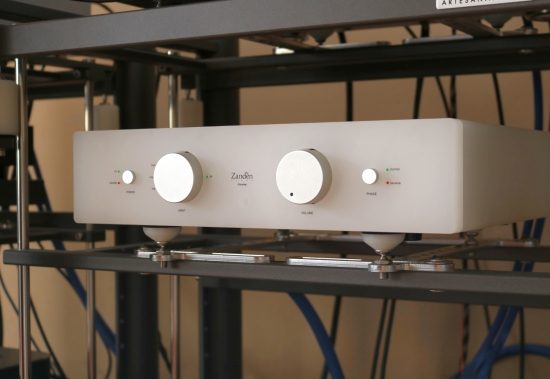
Zanden 3100 description
The Zanden 3100 preamp uses only 2 Philips JAN 5687WB tubes: one for the rectification and one for the output stage using zero negative feedback. Virtually all the components inside are covered with second-generation Pulseshut. The 3100 is not fully balanced internally but its XLR inputs and double XLR outputs are transformer-coupled, creating properly balanced outputs. The transformers eliminate the need for further gain stages and allow for a very simple circuit. The preamp appears to be made entirely of acryl but actually consists of a fully enclosed stainless steel box with the white acryl parts attached on the sides. Before assessing the full capabilities of the Zandens in my main setup, I first wanted to see how they would perform in the smaller secondary setup.
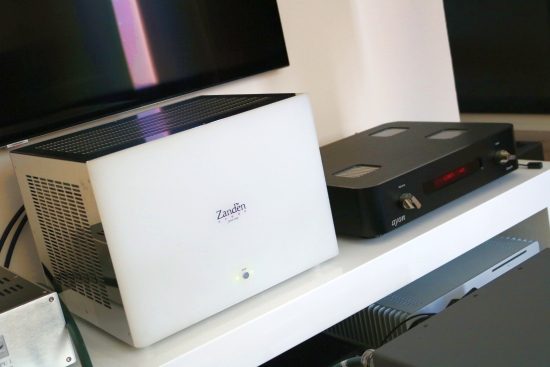
Zanden 8120 + 3100 in the secondary setup
The secondary system currently consists of a PrimaLuna DiaLogue Premium or NuPrime ST-10 power amplifier, an Ayon Stealth preamp, and DAC and Xavian Perla Esclusiva speakers. Cinch interlinks used between DAC and preamp and between preamp and power amp are AudioQuest Water. Power cables are Belden 19364 with Isotek connectors for the power amps and Furutech Alpha 3 with Furutech FI28/38 connectors for the preamps and sources. As the Xavians have a nominal 8-ohm impedance I used the Zanden’s 8-ohm taps.
Listening
Substituting the PrimaLuna DiaLogue Premium for the Zanden 8120 while retaining the Ayon Stealth as a preamp and DAC it took no time at all to realize that this amp really pushed the Perla’s performance to the max. The soundstage became wider but also considerably deeper, with a more room-filling ambiance. Vocals and other centrally placed sounds were more clearly discernible yet also more free-floating in space. Midrange textures were richer in harmonics, smoother yet also more detailed and ever so emotionally engaging. Interestingly, in spite of the extra texture, fluidity, and richness, the sound had not slowed down. In fact, transient snap, bass control, overall speed had improved, the bass now being almost as propulsive as that of the NuPrime ST-10. Considering that the latter is a Class-D design and that bass precision is one of class-D’s typical strong suits, that is particularly impressive. There is a subtle and pleasant smoothness, spread very evenly across the entire frequency range but the Zanden does not have any signs of hysteresis and none of the typical thickness in the bass that plagues many tube designs. Indeed, the Zanden’s bass performance as a whole seemed to be on par with some of the best solid-state amplifiers that I know, adding to this a tube magic on par with the best I’ve heard from Push-Pull tube amps.
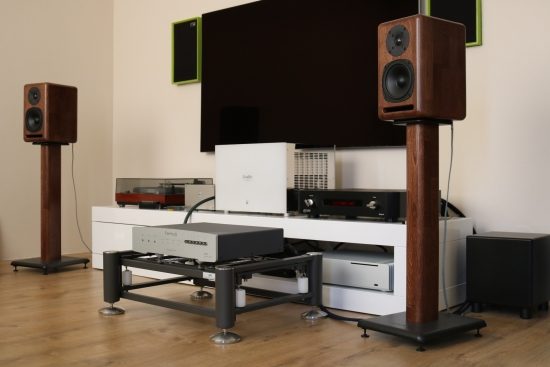
Aqua Formula xHD DAC
Adding the Aqua Formula xHD to the mix, still retaining the Ayon Stealth but only as a preamp, the sound improved further: more detail, more transparency, more neutral and more even-handed, and even faster and more nimble bass. I already knew that the Formula xHD is a great DAC but this time it surprised me even more because the unlikely partnering with the Ayon as a preamp and the Zanden 8120 as a power amp turned out to be surprisingly great. It is with this combination that I forgot about reviewing altogether and listened to track after track with Roon on Radio mode. Arguably the Xavian’s strongest suit, conveying emotion, was now revealed to the max, the system making music in a way that makes you slip into the performance and just forget about time.
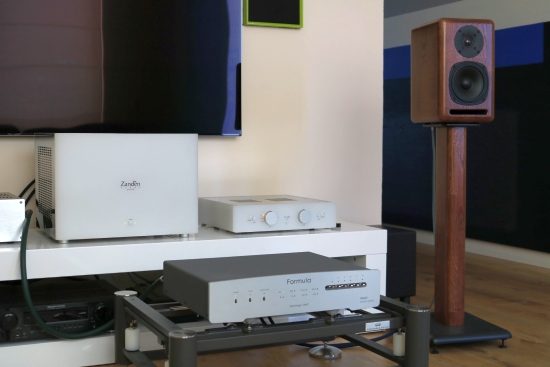
Zanden 3100 preamp
Substituting the Ayon Stealth for the Zanden 3100 preamp and allowing it 30 minutes to warm up, the presentation was quite different: warmer, sweeter, more transparent and refined and a little bit more romantic. Coming from the very energetic Ayon, the Zanden 3100 sounded quite relaxed. It did not seem to have the same sense of immediacy, pacing or dynamic impact. Listening for longer, however, as my impressions of the Ayon faded to the background, the 3100 started to grow on me. It is less bold and less overtly energetic in its delivery but clean, clear and articulate nonetheless. Its sophisticated presentation reminded me of the Jeff Rowland sound. As with that brand’s (pre-) amplifiers, harshness, grain or edge are just not in the Zanden 3100’s vocabulary.
The next day, I allowed the unit to warm up for more than an hour and started listening with the 3100, not the Ayon. Whether it was my reset hearing or perhaps the full hour of warm-up time was really better for the 3100, in any event, the preamp now sounded just right in terms of punch and dynamics. To make sure of my observations I reconnected the Ayon Stealth. For the record: this unit sounds dynamically fully “on” from the start, changing only mildly in terms of imaging and fluidity as it warms up. Comparing the preamps in this order it became clear that the Ayon does not really sound much more powerful per se but that it does have a more sonorous delivery, with a more direct and articulate lower bass and a very solid upper bass/lower midrange. It is a bit Classic Wadia-like or PS Audio-like in that respect and this is something that I personally like because it can give performances more of a “live” aspect but in all fairness, this could also be perceived as coloration. What to make of this? I’d say that it’s more a matter of perspective than one of quality. Both preamps provide an involving experience and both have that lyrical quality that makes one get lost in the music.
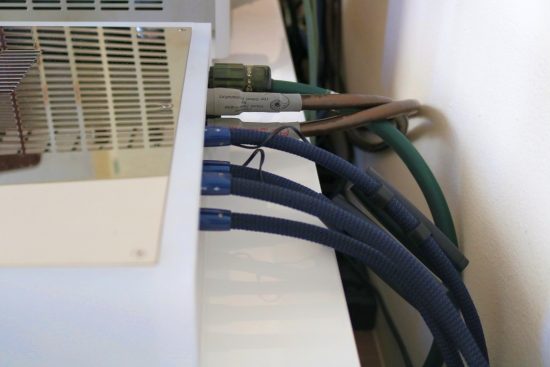
Cables
So far, all listening was done using single-ended cables. I also connected T T L’d balanced XLR Cardas Hexlink Golden 5C cables and while this also sounded great with a slightly more fulsome sound, I preferred the cinch interlinks because they were slightly more articulate in the bass and purer in the midrange. I used the “old” Hexlink cables initially because they sound quite similar to the Waters. Naturally, other cables will lead to other, or even reverse results. Indeed, when I tried the Cardas Clear XLR, the sound was much more articulate and precise than with the XLR Hexlink or the cinch Water, but slightly less solid and sonorous than with the AudioQuest Water cinch. In this setup, I preferred the latter, which comes down to system synergy, meaning that a different room or different speakers will probably work out differently.
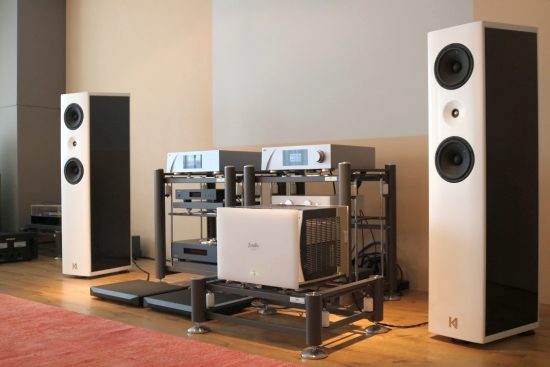
Zanden 8120 in the main setup
The main setup normally consists of the CH Precision C1 DAC/Streamer/Controller and A1 stereo amp, two music servers: the Melco N1ZH and the Antipodes EX and Wilson Audio Watt/Puppy 8 speakers. For this occasion, the Wilsons were substituted for the Kroma Audio Carmens which were simultaneously on a visit for review. Speaker cables are the Jorma no.3 and analog interlinks the AudioQuest Water cinch and Cardas Clear XLR. All power cables are Belden 19364 with Oyaide 004 IECs, except for the ones for the power amps which in this case both used Belden cables with the warmer sounding Oyaide 079 IECs. In this system, I use no separate analog preamp, only the CH Precision C1 DAC directly with its hybrid analog/digital volume control. It is not practical to assess an analog preamp in this setup because I would be comparing it with the absence of a preamp which is like comparing apples and, well, no apples. For this reason, I refrained from testing the Zanden 3100 preamp in this part of the test. Near the end of the review, however, audio buddy Big Niels came to visit, bringing his Audio Research Ref5 preamp with him. This enabled further comparisons, which are detailed further down in part 2 of this review.
8 ohm versus 4 ohm
Although the Carmens have a nominal 8-ohm impedance and it would seem obvious to use the Zanden’s 8-ohm taps, I felt compelled to experiment with this anyway. While the 4-ohm taps may work well for people who prefer a more romantic touch, I felt that the 8-ohm taps provided a more powerful, more transparent and more articulate delivery, while still being capable of making for a romantic sound when this was in the recording. Clearly, the 8-ohm taps were technically the best match. In retrospect, I am confident that the 4-ohm taps would also not have worked in the secondary setup with the Xavians.
Interlinks and Cinch versus XLR
I know there are people who on principle prefer cinch or XLR. I’ve long favored the latter, mainly because my Jeff Rowland equipment only allowed such connections but I also found for some cables that I owned in both cinch and XLR that the latter sounded better. That was with a Wadia 861 CD player and Jeff Rowland Synergy IIi preamp, which only has XLR connections, necessitating the use of cinch-XLR adapters. Later experiences made it clear that there is not really a hard rule as to which type sounds better and that it largely depends on the connected components that are used. Balanced designs need not sound best using XLR cables (but they can) and single-ended designs that also offer XLR inputs need not always sound best with Cinch cables (but they can). In this case, I found myself in a bit of a limbo because I do not have cinch and XLR cables of the same brand and type but even if I did, past experiences already taught me that it is near impossible to determine whether the deciding factor for the best cable match is in the source or destination component. But because I was informed that Zanden sounds best using XLR connections, I felt that I should definitely assess this using different interlinks between CH Precision C1 and Zanden 8120.
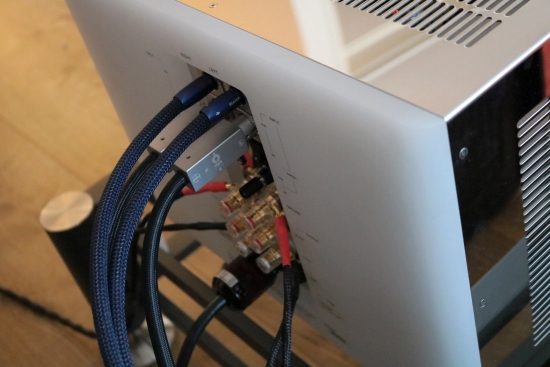
I started off using the AudioQuest Water cinch which is a cable that has proven to be applicable across a wide range of components and give predictable results. In this case, too, the Water provided a good balance between control, sonority, and musicality. Going from the Water to the Transparent Super Gen 5 made for a smoother, lusher delivery but also less dynamic impact. Changing to XLR cables (and adjusting the volume accordingly), the Cardas Clear XLR made for a large jump in bass definition and overall clarity and transparency compared to the Water cinch, with more impressive dynamics, while retaining the smoothness and airiness of the Transparent Super. Substituting the Clear for the CH Precision Balanced Link further increased the overall levels of control, definition, and power, with truly stunning dynamics. Although the sound was now arguably most natural in timbre and definitely most impressive, the delivery was also a little bit more factual, very precise and less romantic if you will. For my taste, the Cardas Clear XLR provided the best balance between romance and precision and so it was the cable that I used for all further listening.
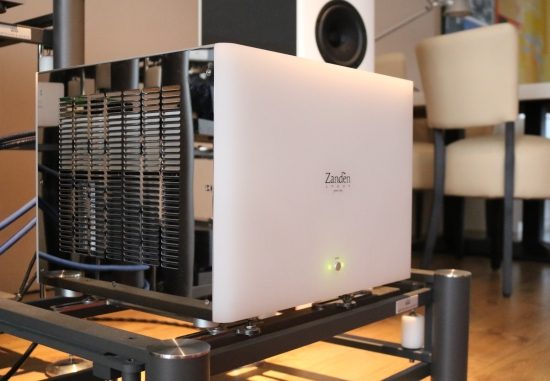
Listening
Substituting the CH Precision A1 amp (with feedback between 0 and 20 depending on music played) for the Zanden 8120 on an Artesania Aire Floor Platform, while retaining the CH C1 as DAC and Controller, so with no actual analog preamp in the chain, the Zanden amazed me with its neutrality and transparency. I expected a more tubey sound but while it sounded sweeter and fuller, it was just as dynamic and lively as the CH Precision A1, and very fast and articulate. I mentioned in the first part of this review that the Zanden 8120’s bass power and solidity is on par with some of the best transistor amps. While I still stand by that statement, I should add that the Zanden does not achieve the insane levels or articulation, transparency, and transient snap as the CH Precision A1. Especially in the bass, the A1 is more nimble and articulate even when its global feedback is set to zero. Then again, of all the tube amps that I used, the Zanden most certainly is the most articulate and well-controlled and it also has the most powerful, most well-defined bass, by a large margin!
Bass is not all that matters, of course, but I find that this area is the most difficult to get right, especially with tubes and the Zanden definitely nailed this. More amazingly, still, the 8120 really seems to combine the best of both worlds while avoiding the typical flaws of either tube- or transistor designs. This is a tube amp that does not sound like a typical tube amp because it has none of the usual seductive but detractive tube side effects which, for some people probably defines the stereotypical “tube sound”. The Zanden is just so very linear in its behavior, so articulate, so upbeat and dynamic that it is probably not the ideal amp for people looking for that typical euphoric tube richness and smoothness, which in essence, is often a form of distortion. However, don’t assume that the Zanden is too clean for its own good because that is absolutely not the case. Yes, it is analytical in the sense that it does not mask anything and lets you hear deep into the mix but compared to the extremely neutral CH A1 (hey, it’s Swiss!) it is slightly sweet and, importantly, it has a richly textured, harmoniously full sound as well as that certain quality that evokes emotion in a way that transistor amps in my experience always do to a lesser extent, the A1 included. The Zanden has a more emotional delivery, not due to coloration or added thickness but by better fleshing out the sounds and fully allowing them to decay while projecting them more freely in a soundstage that is not only more room-filling but also better layered and more 3D and therefore, more involving.
For electronic music and music, in general, that is more driven by rhythm than melody, I feel that the CH Precision A1 still has the edge. With this kind of music, the A1 is not only technically great but also refined and spacious and every so engaging. For music that is more focused on vocals and/or acoustical instruments, however, the Zanden definitely has the edge. With the Zanden, all the technical aspects are well taken care of, allowing the mind to be satisfied while the music simply pours straight into the soul. This amp’s delivery is so very natural and involving that it is really hard to stay in critical reviewer-mode for longer than a single track.
